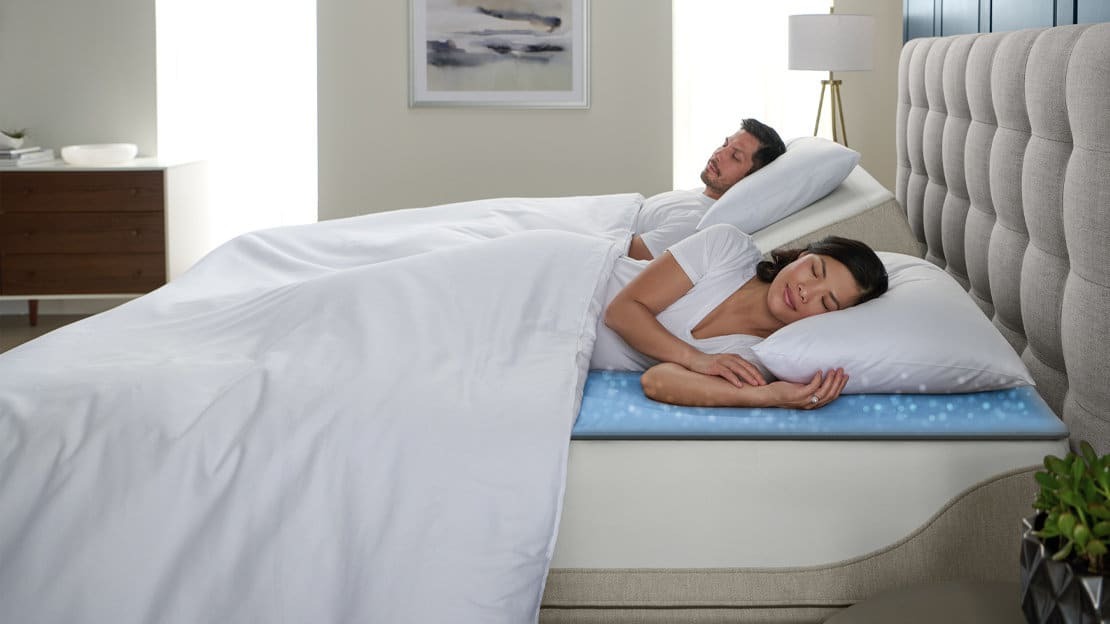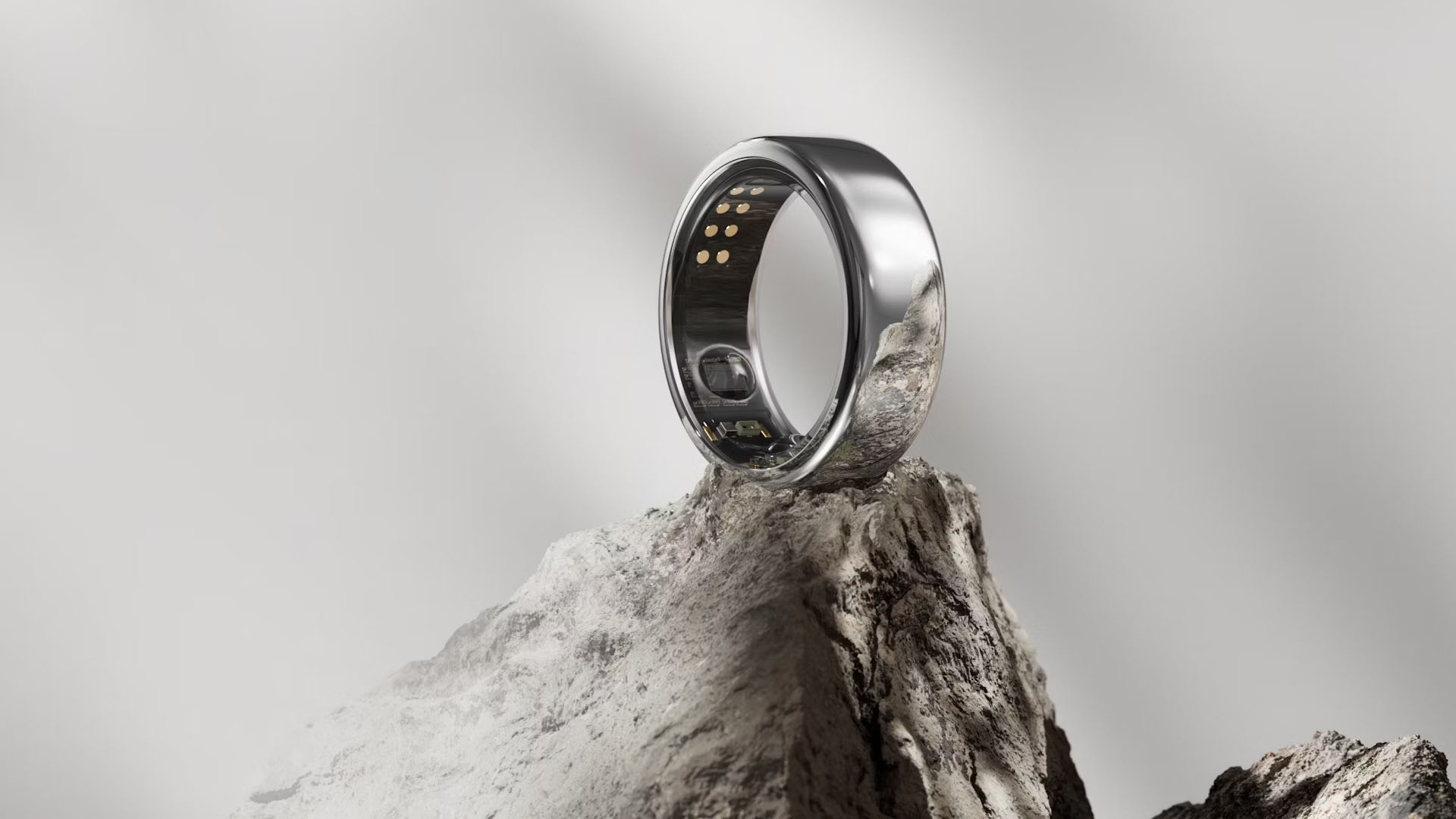Can a smart mattress replace a wearable sleep tracker? Yes — here's why
We weigh up the pros and cons of smart mattresses vs sleep trackers

Sleep trackers, whether in smart mattresses, wearable fitness trackers, or sleep apps, promise accurate sleep metrics to help you learn about your rest. But if you want understand, and even improve, your sleep, are smart beds or sleep trackers better?
Smart mattresses feature embedded sensors, capable of measuring your every heartbeat, but for this fine detail you have to pay a high price. Sleep tracking wearables are more affordable, but drawing information from just one part of your body, they're also less accurate.
In this smart mattress vs sleep tracker face-off, we'll examine key factors like price, ease of use, and accuracy, to help you decide which is right for you. And if you're seeking better sleep, make sure to head across to our best mattress hub, for a bed that can support your slumber.
Smart mattress vs sleep tracker: price
There's a pretty clear price difference between smart beds and wearable fitness trackers. One of our favorite smart beds, the Sleep Number i8 Smart Bed, has a starting MSRP of $3,399 for a twin. This price is competitive for the best smart beds and mattresses, which are always premium buys. Even the very cheapest of smart beds, such as the recently launched Sleep Number c1 Smart Bed, are more expensive than a wearable.
The best wearable fitness trackers are, in comparison, much cheaper. The Fitbit Charge 6 includes sleep tracking and is priced at $159.95. Prices for the Oura Ring, our favorite wearable sleep tracker, begin at $299.
Finally, sleep tracking apps tend to be free (or very cheap) to download, but to properly access the content you need to pay a monthly subscription. This generally runs to a few dollars per month, making this the most affordable option.
Some smart beds and fitness trackers also require a subscription to gain full access to your data. These subscriptions typically cost between $5 and $25 per month, so it's important to factor in the subscription cost when making a purchase.
Sleep Number i8 smart bed: was from $3,399 now $2,999 at Sleep Number
The Sleep Number i8 offers adjustable firmness, allowing you to change the feel of the bed to suit your needs and preferences. And in the morning, you can see just how well you slept, thanks to the built-in sleep sensors. There's $500 off all sizes of the Sleep Number i8 right now, reducing a queen to $3,499 (was $3,999).
Oura Ring generation 3: from $299 at Oura Ring
The Oura Ring is unusual for a wearable, fitting around your finger, not your wrist. The unobtrusive design is ideal for sleeping in, while the advanced tracking offers an excellent overview of your rest.
Smart mattress vs sleep tracker: type of sleep tracking
- Smart beds have sensors across the body to track every movement
- Wearables collect data from the wrist, including movement and heart rate
- Sleep apps typically monitor sound
Smart mattresses feature a series of small sensors found beneath the surface of the bed. These sensors are able to detect your movements, as well as your heart rate and breathing, to determine which stage in the sleep cycle you currently occupy.
Some smart mattresses use a technology known as ballistocardiography. Essentially, a ballistocardiogram measures the forces related to the movement of the heart and your blood, giving a minute picture into what your body is doing.
Wearable fitness trackers typically use a combination of motion sensors and heart rate monitors to build an impression of your sleep. These two factors are able to detect how you move throughout the night, as well as changes in your heart rate. This data is then fed to a powerful algorithm which can use the information to build an impression of your sleep.

The most advanced wearable sleep trackers can also measure your respiratory rate, body temperature, and even your blood oxygen rate – the Oura Ring uses infrared LED sensors to estimate how much oxygen is in your blood, to better understand your sleep.
App-based sleep trackers, on the other hand, typically use the microphone in your smartphone to detect movement. It will use the presence (or lack off) movement to build an impression of your sleep.
Smart mattress vs sleep tracker: accuracy
- Smart beds use full-body sensors to create accurate sleep metrics
- Wearables offer overall accurate metrics, but lack full-body readings
- Sleep apps are the least accurate
Smart beds and mattresses feature sensors all the way across the bed. The best smart beds can pick up everything from a twitching foot to a racing heart, creating an incredibly accurate impression of your nighttime habits.
Many smart beds also claim to be capable of accurately tracking two people at once. So if your partner has a restless night and you sleep like a baby, your metrics won't get confused.
However, if you have kids and, especially, pets, you might find their movements end up disrupting the accuracy of the sleep tracking. A cat jumping onto your mattress in the middle of the night might be measured as a particularly unexpected wake-up, when you actually dozed right through it.
Wearable sleep trackers are used on only one part of the body (typically the wrist, but sometimes a finger, and there are even sleep tracking headbands). This results in less accurate tracking data, although most wearables can still build up a good impression of your sleep.

Many sleep trackers are designed primarily as fitness trackers, with sleep data a secondary offering. However, some trackers place more priority on sleep metrics. For example, in our Oura Ring Generation 3 review our tester found the metrics for more advanced than those provided by the Apple Watch.
Sleep tracking apps are the least accurate option. These typically monitor sound to build an impression of movement during the night. They can give a general overview of when you settled down for sleep, when you woke up, and if you were particularly restless, but they don't offer a deep dive-in to your sleep metrics. They also have a tendency to interpret any noise as movement, including a car going past or a dog barking.
Smart mattress vs sleep tracker: ease of use
- The initial set-up phase for smart beds and trackers can be complicated
- After this, these technologies are easy to use
- Smart bed sensors are unobtrusive, wearables can be uncomfortable
Using a smart mattress isn't quite as simple as falling into bed. Smart mattresses with in-built trackers typically need to be connected to an app, which you use to access your sleep metrics. The initial set-up phase can be complex, especially if you've never used a smart bed before.
But once the bed is set-up, it should be as easy as going to sleep and checking your phone in the morning. Most smart mattresses also include additional features such as adjustable firmness or changeable temperature. Again, it can take a moment to learn, but once you've got the hang of it, these features enhance the use of the mattress.
The sensors in a smart bed shouldn't affect your sleep at all. As they're contained within the mattress, you can't feel them. In fact, until you wake up and see the data you've recorded overnight, you should hardly know the sensors are there.
Wearable sleep trackers are also relatively easy to use, although there can be a bit of a learning curve. The biggest issue with wearable trackers is in the name – you have to wear them. While the designs strive to be unobtrusive, they can feel uncomfortable to keep on overnight.
Smart mattress sleep tracking: pros and cons

Smart beds and mattresses typically combine sleep tracking with other sleep enhancing features such as adjustable firmness and temperature. These are premium beds, but they offer a brand new sleep environment alongside a method of understanding your rest.
Pros:
✅ Full-body sensors increase accuracy: With sleep reading sensors across the mattress, a smart bed gives an incredibly accurate impression of your sleep.
✅ You can take control of your sleep: As well as providing sleep metrics, smart beds offer ways to improve your rest, with adjustable feels and temperature control aiding sleep.
✅ You can track two people at once: Smart beds are often a two-in-one deal, providing sleep tracking for both people sharing a bed. So you and your partner don't have to buy separate trackers.
Cons:
❌ Other people can disrupt readings: Got pets or kids that like to come into your room in the night? Their movements might be read as very disrupted sleep on your behalf.
❌ They're expensive: Smart beds are some of the most expensive mattresses on the market, and cost significantly more than a wearable. But they might justify the cost – learn more with our guide are Sleep Number beds worth it?
Sleep tracker sleep tracking: pros and cons

Sleep trackers broadly fall into two categories: wearables and sound-monitoring sleep apps. Wearables are more expensive, but they're also more accurate, while apps are very cheap but not particularly reliable.
Pros:
✅ They're more affordable: A good fitness wearable is likely to set you back a couple of hundred dollars, but this is nothing compared to the thousands a smart mattress can run to.
✅ You can also track your fitness: Wearable sleep trackers also double up as fitness trackers (in fact, that's often their primary aim). Good news if improved sleep is part of an overall health plan.
✅ You can try sleep tracking for cheap: Sleep tracking apps might not be hugely accurate, but they're a cheap and easy way to experiment with sleep monitoring and see if you're interested in the data.
Cons:
❌ Less accurate tracking: Wearables don't have the same full-body sleep tracking as a smart bed, which means the results are less accurate overall.
❌ Can be uncomfortable to sleep in: A wearable tracker is relatively small, but it can still be uncomfortable to wear a watch to bed.
Smart mattress vs sleep tracker: Which should you buy?
The sleep tracking provided by smart mattresses offers you an easy way to understand how the other features of the bed are working – like the responsive feel and adjustable temperature.
Smart mattresses are fantastic if you want to boost your overall sleep environment while learning about your rest. Integrating sensors into the bed, they're highly accurate. But as you're also getting a top-of-the-range mattress, they're expensive.
Wearable fitness trackers are less pricey, but they're also less accurate. Measuring data from just one part of the body (generally the wrist), wearable sleep trackers provided an excellent overall picture but lack the detailed readings of a smart bed. However, they're also significantly cheaper.
Finally, sleep tracking apps are a basic and inexpensive option, but they can only offer basic outlines of your sleep. Still, they're a good way to discover more about sleep metrics, before upgrading to a wearable of smart bed.
Sign up to get the BEST of Tom's Guide direct to your inbox.
Get instant access to breaking news, the hottest reviews, great deals and helpful tips.

Ruth is a staff writer at Tom’s Guide, covering all things mattress and sleep. She has a deep interest in the link between sleep and health, and has tried enough mattresses to know the right bed really can make a difference to your wellbeing. At Tom’s Guide she writes to help people sleep better, from how-tos to the latest deals to mattress reviews, and has interviewed an array of specialists who share her passion. Before joining the team at Tom’s Guide, Ruth worked as a sleep and mattress writer for our sister website, TechRadar.


